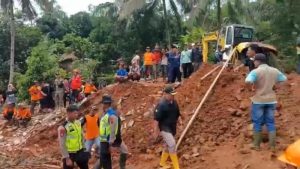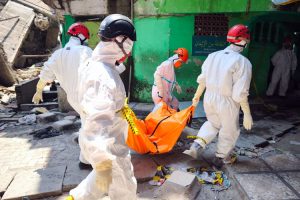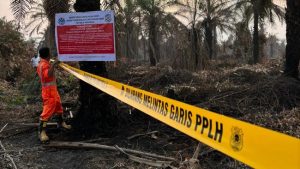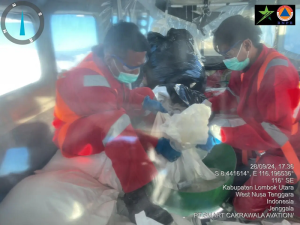Padang-West-Sumatra-Indonesia-300x183.jpg" alt="Chaotic traffic is seen on a street as people try to reach higher ground following a strong earthquake which triggers tsunami warning in Padang, West Sumatra, Indonesia," width="300" height="183" /> Chaotic traffic is seen on a street as people try to reach higher ground following a strong quake trigering tsunami alert in Padang, Indonesia,
Padang, West Sumatra, 24 Jumadil Awwal 1437/04 March 2016 (MINA) – All 22 of the early-warning buoys Indonesia deployed after the 2004 tsunami disaster were inoperable when a massive undersea earthquake struck off the coast on Wednesday, a National Disaster Mitigation Agency (BNPB) official said.
The 7.8-magnitude quake did not trigger a tsunami, and there were no deaths and no major damage, but it did expose gaps in the systems put in place to prevent a disaster similar to the Indian Ocean quake that killed more than 200,000 people 11 years ago, Mi’raj Islamic News Agency (MINA) reported, quoting RNZ.
In addition to the malfunctioning of buoys designed to warn of massive waves, authorities said there were not enough evacuation routes or shelters in Padang, a Sumatra island port city of around one million people that felt the quake.
“There was definitely panic … that cannot be denied,” said Zulfiatno, the head of the disaster management agency in Padang who uses only one name, adding that shelters had the capacity to only hold around 200,000 people.
Also Read: Indonesia Reaffirms Full Support for Palestinian Independence Before Jordan’s King
“But the situation has improved from previous years. People have started to understand how to evacuate safely.”
The 9.1-magnitude quake of December 2004 opened a fault line deep beneath the ocean, triggering a wave as high as 17.4m that crashed ashore in more than a dozen countries to wipe some communities off the map in seconds.
The province of Aceh on the northwest tip of Sumatra bore the brunt of the 2004 tsunami, with at least 168,000 killed.
Soon after that disaster, Indonesia introduced a sophisticated early warning system using buoys, sea-level gauges and seismometers that can send alerts to countries’ tsunami warning centres within 10 minutes of a quake.
Also Read: Majenang Landslide: 21 Missing in Central Java
But the buoys, which measure the force and speed of water movement, were a missing link in the chain. Authorities delayed the lifting of their tsunami warning because of the inoperable buoys, which cost around $2.3 million a year to maintain.
“We can easily forget. After the quake in Aceh we wanted to do everything, but by 2015 we don’t have money allocated (to fix the buoys),” said Sutopo Purwo Nugroho, spokesman for the National Disaster Mitigation Agency. “Most of (the buoys) were broken by vandalism.”
Although there were some strong aftershocks on Thursday, normal life largely resumed at daybreak in Padang.
Fears ran high on Wednesday evening when it was reported that the tremor had measured 8.2 and authorities issued evacuation alerts on loudspeakers, radio and TV. Patients at hospitals in Padang were evacuated and there were traffic jams as panicking residents tried to leave.
Also Read: BPOM Sets MURI Record for Producing 810 Reference Standard Compounds
However, the US Geological Survey (USGS) revised the magnitude down to 7.8 and within two hours of the quake striking the tsunami warnings were cancelled. USGS said the epicentre was 808 km (502 miles) southwest of Padang. (R007/R01)
Mi’raj Islamic News Agency (MINA)
Also Read: Densus 88 Confirms Jakarta School Explosion Was Not Terror-Related































 Mina Indonesia
Mina Indonesia Mina Arabic
Mina Arabic